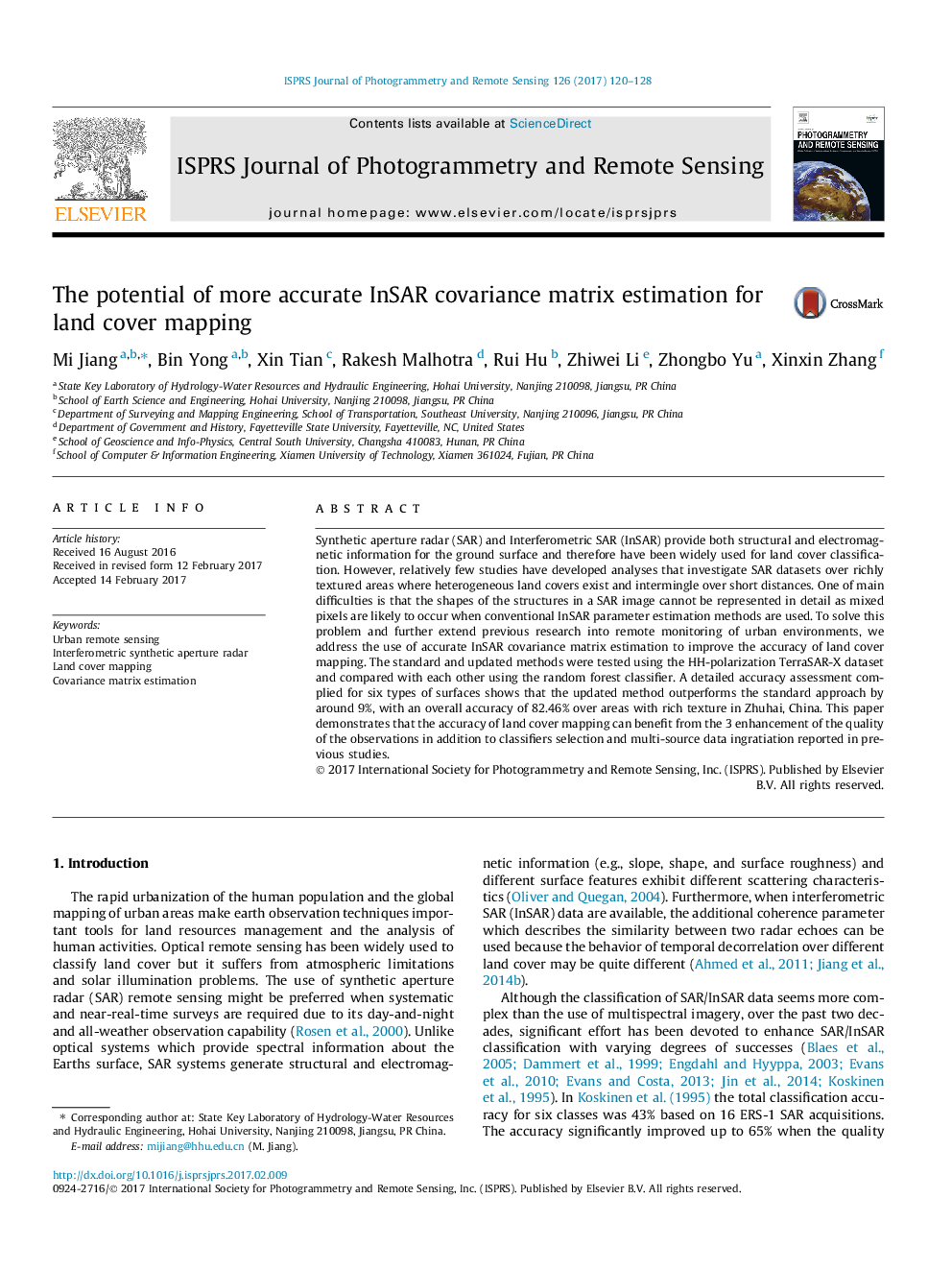| Article ID | Journal | Published Year | Pages | File Type |
|---|---|---|---|---|
| 4972946 | ISPRS Journal of Photogrammetry and Remote Sensing | 2017 | 9 Pages |
Abstract
Synthetic aperture radar (SAR) and Interferometric SAR (InSAR) provide both structural and electromagnetic information for the ground surface and therefore have been widely used for land cover classification. However, relatively few studies have developed analyses that investigate SAR datasets over richly textured areas where heterogeneous land covers exist and intermingle over short distances. One of main difficulties is that the shapes of the structures in a SAR image cannot be represented in detail as mixed pixels are likely to occur when conventional InSAR parameter estimation methods are used. To solve this problem and further extend previous research into remote monitoring of urban environments, we address the use of accurate InSAR covariance matrix estimation to improve the accuracy of land cover mapping. The standard and updated methods were tested using the HH-polarization TerraSAR-X dataset and compared with each other using the random forest classifier. A detailed accuracy assessment complied for six types of surfaces shows that the updated method outperforms the standard approach by around 9%, with an overall accuracy of 82.46% over areas with rich texture in Zhuhai, China. This paper demonstrates that the accuracy of land cover mapping can benefit from the 3 enhancement of the quality of the observations in addition to classifiers selection and multi-source data ingratiation reported in previous studies.
Keywords
Related Topics
Physical Sciences and Engineering
Computer Science
Information Systems
Authors
Mi Jiang, Bin Yong, Xin Tian, Rakesh Malhotra, Rui Hu, Zhiwei Li, Zhongbo Yu, Xinxin Zhang,
